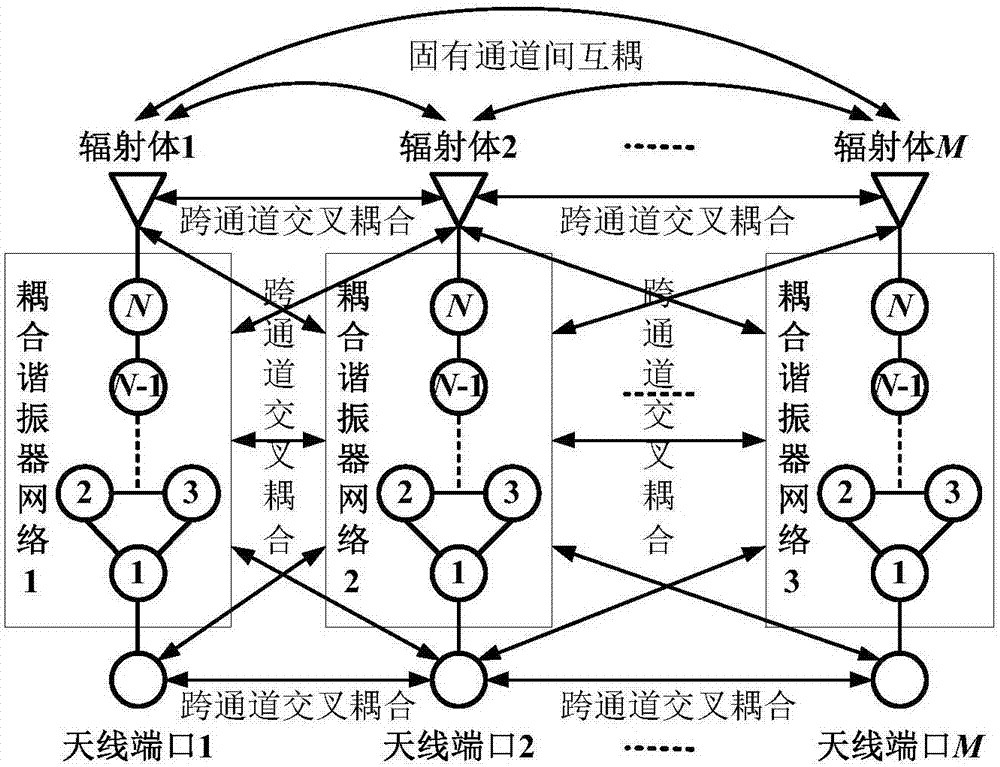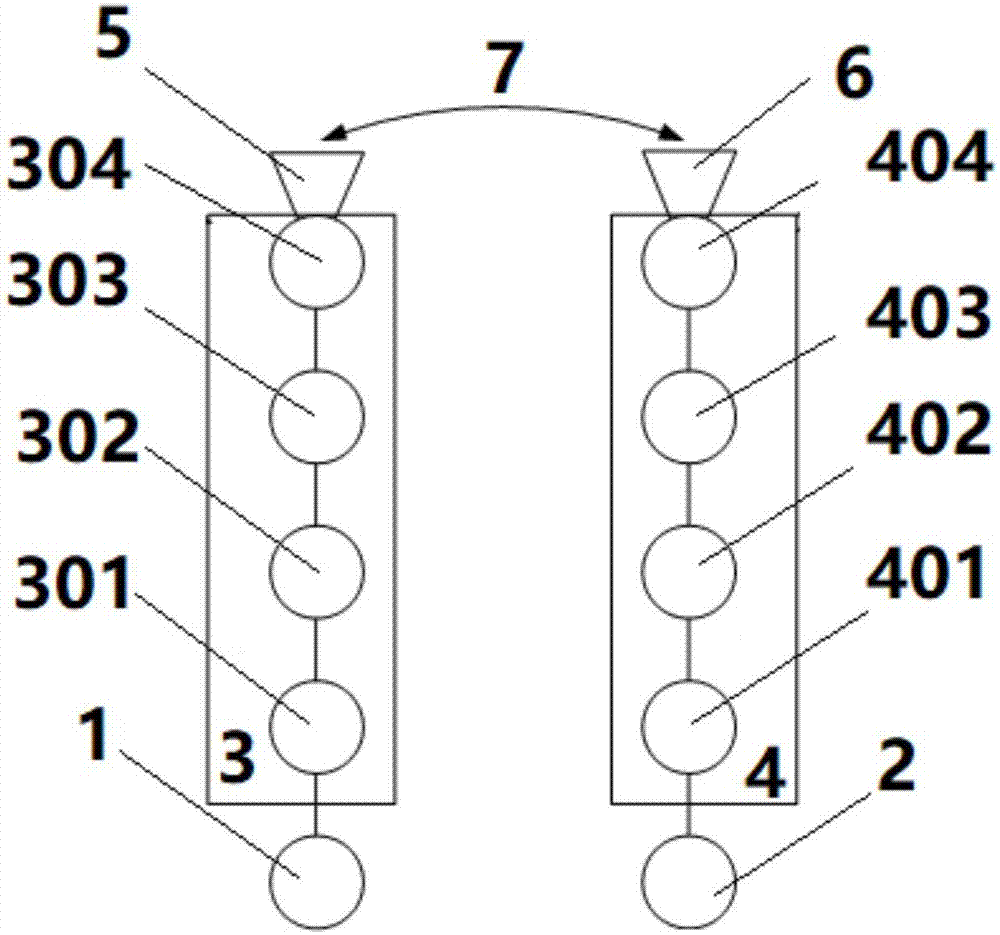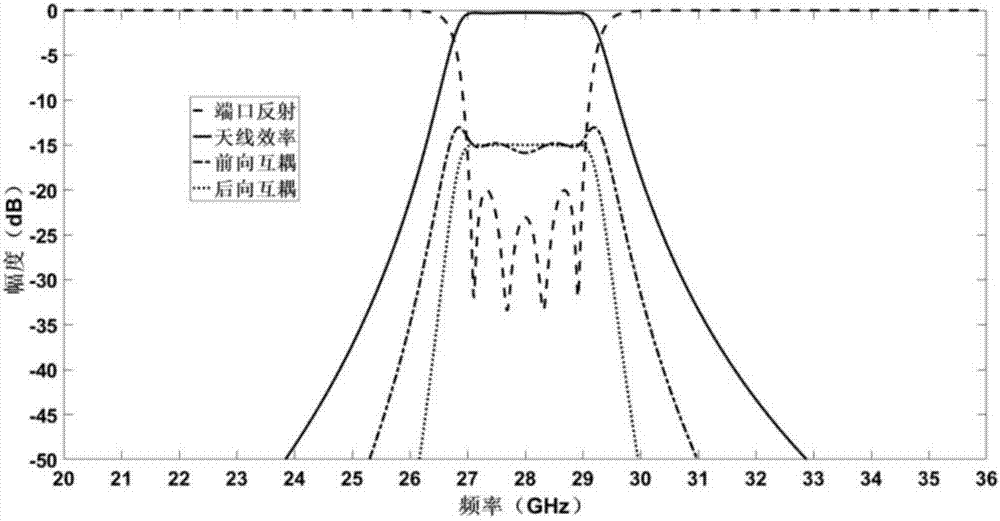Filtering antenna realization method capable of suppressing mutual coupling between channels based on cross-coupling
A technology for cross-coupling and filtering antennas, applied in the directions of antennas, antenna coupling, and antenna components, etc., it can solve the problems of limited effect and cannot improve the forward and backward mutual coupling at the same time, and achieve high frequency selectivity and high mutual coupling. The effect of suppressing the effect
- Summary
- Abstract
- Description
- Claims
- Application Information
AI Technical Summary
Problems solved by technology
Method used
Image
Examples
Embodiment 1
[0034] Such as Figure 2aAs shown, it is a filter antenna without decoupling treatment, which includes: the first antenna port 1 and the second antenna port 2, the first and second coupling resonator networks 3, 4 connected thereto, respectively connected to the first and the first and second radiators 5, 6 at the end of the second coupled resonator network, each coupled resonator network is composed of 4 sequentially directly coupled resonators 301-304 or 401-404, and the resonators 304, 404 They are integrated with the first radiator 5 and the second radiator 6 respectively. There is an inherent mutual coupling 7 between the first radiator 5 and the second radiator 6, which causes forward and backward coupling between the two filter antenna channels, which will respectively distort the antenna pattern and make the connection between the two channels The isolation characteristics between them deteriorate.
[0035] Such as Figure 2b As shown, the filtering antenna comparat...
Embodiment 2
[0039] Such as Figure 4a shown, corresponding to Figure 2a Embodiment 2 adopted in Comparative Example 1 includes: first and second antenna ports 1, 2, first and second coupled resonator networks 3, 4 connected thereto, respectively connected to the first and second coupled resonator The first and second radiators 5 and 6 at the end of the network form four sequentially directly coupled resonators 301-304 and 401-404 of each coupled resonator network, and the resonators 304 and 404 are respectively connected to the first radiator 5, The second radiator 6 is integrated, the inherent mutual coupling 7 that exists between the first and second radiators, and the first span introduced between the third resonators 303 and 403 of the two coupled Channel cross-coupling 8, a second cross-channel cross-coupling 9 introduced between the second resonators 302 and 402 of the two coupled resonator networks. Except for the first and second cross-channel cross-couplings 8, 9, other parts ...
Embodiment 3
[0042] Such as Figure 5a shown, corresponding to Figure 2a Embodiment 3 adopted in Comparative Example 1 includes: first and second antenna ports 1, 2, first and second coupled resonator networks 3, 4 connected thereto, respectively connected to the first and second coupled resonator The first and second radiators 5 and 6 at the end of the network form four sequentially directly coupled resonators 301-304 and 401-404 of each coupled resonator network, and the resonators 304 and 404 are respectively connected to the first radiator 5, The second radiator 6 is integrated, the inherent mutual coupling 7 existing between the first and second radiators, and the introduction between the first radiator 5 and the second resonator 402 of the second coupled resonator network The first cross-channel cross-coupling 8 of the first coupling resonator network, the second cross-channel cross-coupling 9 introduced between the second resonator 302 of the first coupling resonator network and t...
PUM
 Login to View More
Login to View More Abstract
Description
Claims
Application Information
 Login to View More
Login to View More - R&D Engineer
- R&D Manager
- IP Professional
- Industry Leading Data Capabilities
- Powerful AI technology
- Patent DNA Extraction
Browse by: Latest US Patents, China's latest patents, Technical Efficacy Thesaurus, Application Domain, Technology Topic, Popular Technical Reports.
© 2024 PatSnap. All rights reserved.Legal|Privacy policy|Modern Slavery Act Transparency Statement|Sitemap|About US| Contact US: help@patsnap.com










